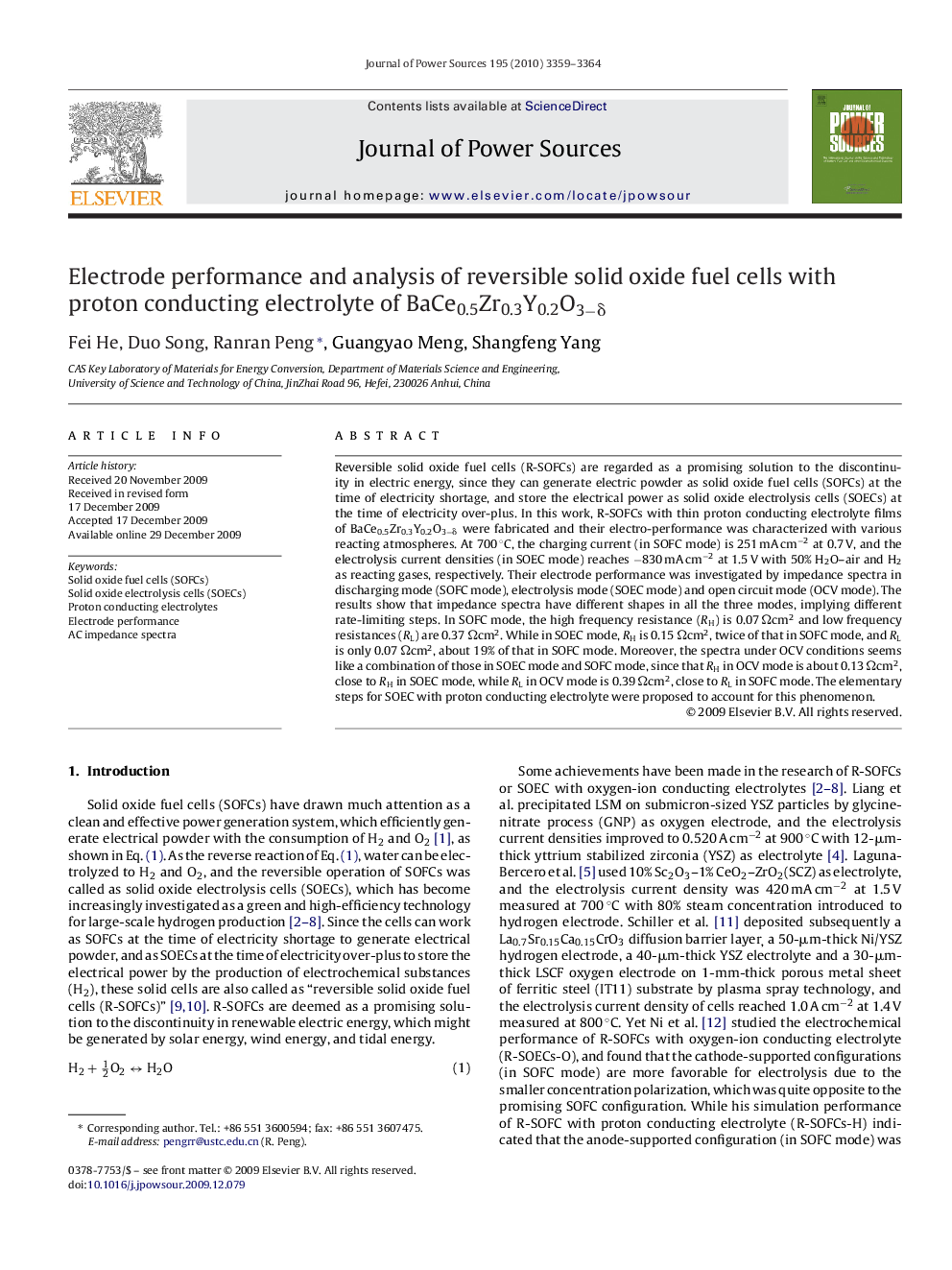| Article ID | Journal | Published Year | Pages | File Type |
|---|---|---|---|---|
| 1289503 | Journal of Power Sources | 2010 | 6 Pages |
Reversible solid oxide fuel cells (R-SOFCs) are regarded as a promising solution to the discontinuity in electric energy, since they can generate electric powder as solid oxide fuel cells (SOFCs) at the time of electricity shortage, and store the electrical power as solid oxide electrolysis cells (SOECs) at the time of electricity over-plus. In this work, R-SOFCs with thin proton conducting electrolyte films of BaCe0.5Zr0.3Y0.2O3−δ were fabricated and their electro-performance was characterized with various reacting atmospheres. At 700 °C, the charging current (in SOFC mode) is 251 mA cm−2 at 0.7 V, and the electrolysis current densities (in SOEC mode) reaches −830 mA cm−2 at 1.5 V with 50% H2O–air and H2 as reacting gases, respectively. Their electrode performance was investigated by impedance spectra in discharging mode (SOFC mode), electrolysis mode (SOEC mode) and open circuit mode (OCV mode). The results show that impedance spectra have different shapes in all the three modes, implying different rate-limiting steps. In SOFC mode, the high frequency resistance (RH) is 0.07 Ωcm2 and low frequency resistances (RL) are 0.37 Ωcm2. While in SOEC mode, RH is 0.15 Ωcm2, twice of that in SOFC mode, and RL is only 0.07 Ωcm2, about 19% of that in SOFC mode. Moreover, the spectra under OCV conditions seems like a combination of those in SOEC mode and SOFC mode, since that RH in OCV mode is about 0.13 Ωcm2, close to RH in SOEC mode, while RL in OCV mode is 0.39 Ωcm2, close to RL in SOFC mode. The elementary steps for SOEC with proton conducting electrolyte were proposed to account for this phenomenon.
